What to Know About Milk Paint and Chalk Paint — and How to Use Them
http://decor-ideas.org 03/12/2015 03:13 Decor Ideas
Love the dreamy look of milk paint and chalk paint but don’t know how or where to use them? Although similar in appearance, milk paint and chalk paint share a lot of traits but also have some differences. Learn how each is unique, how they’re applied and what to expect.
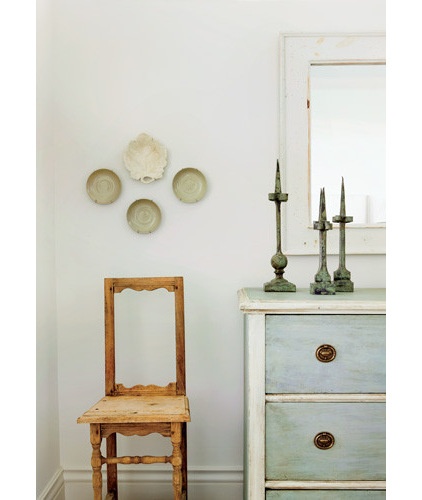
Milk paint and chalk paint are the comfort foods of decorative finishes. Covering the gamut of looks from washed-out and watery to vibrantly opaque, to distressed to sleek and solid, these paints embody homey comfort and wholesomeness.
The love doesn’t stop there. Milk paint and chalk paint are both environmentally friendly and easy to use. Though they have similar appearances, milk paint and chalk paint are two different products. Here’s the scoop on their shared and unique characteristics and how to use them.
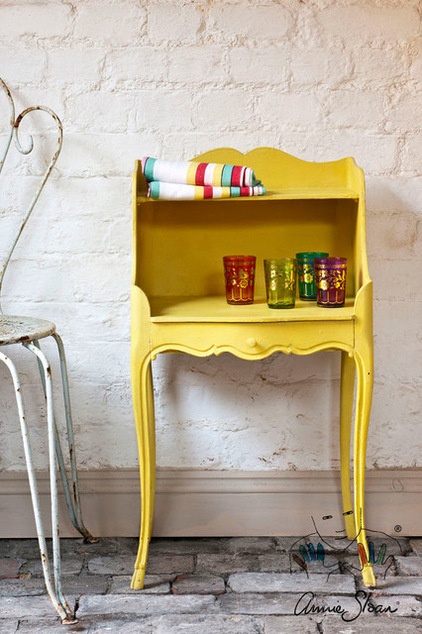
Shared characteristics:
Colors have a chalky (whitish) undertone.Can be applied as a thin wash (like a stain) or as opaque layers.No priming or sanding required.They adhere to almost any surface: wood, masonry, plastic, drywall, plaster, even glass and metal.Easy to apply (can be brushed or sprayed on).They dry quickly (about 15 to 30 minutes per coat).Low VOC (no smelly fumes).Nontoxic.You can mix colors to create your own custom hue.Cleanup is easy: just soap and warm water.No special brushes required to apply paint.Can be distressed, crackled and sealed.Can be used indoors and outdoors.
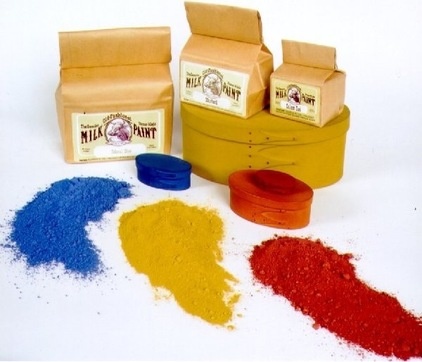
Milk Paint
Milk paint is old school. American colonists decorated their homes with milk paint. Traveling painters went from village to village carrying natural pigments to mix with lime and milk protein at each job. (Every house had a cow or goat, and each town had a lime pit, so the ingredients were very local.)
What it’s made of: Milk paint is made of pigment, lime, clay and milk protein (specifically casein). Milk paint is sold in powder form.
Most popular applications:
Kitchen cabinetry, especially period-style installations Furniture
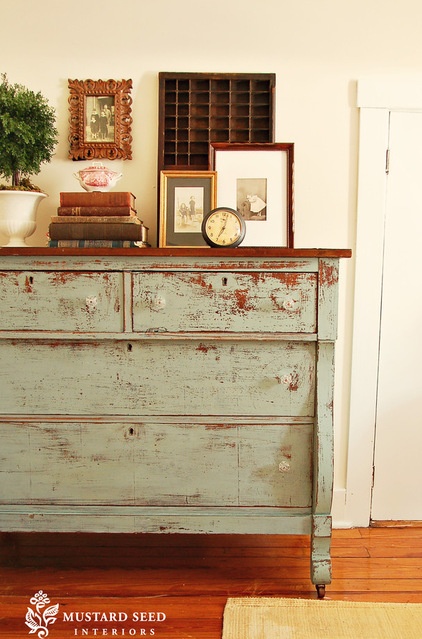
Pros of milk paint (compared with chalk paint):
Note: Some folks may view pros as cons and vice versa, depending on the look they’re going for.
Random flaking of milk paint is likely when it’s applied over previously finished pieces, like the example shown here. Paint chips more easily if manually distressed. Fade resistant.Less expensive: about $25 to cover 75 square feet. Milk paint’s powder form means less weight and a lower transportation cost.Cons of milk paint (compared with chalk paint):
Needs to be manually mixed with water.Must be stirred frequently.Different batches may not match exactly.
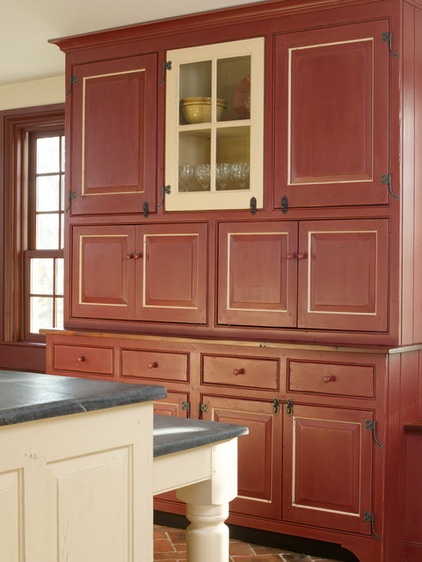
Kevin Ritter of Timeless Kitchen Cabinetry used red and cream milk paint made by The Real Milk Paint Company for this Pennsylvania kitchen.
Ritter believes milk paint is well suited for kitchens with a vintage feel. “I use milk paint because my cabinetry work is inspired by the patina of antique painted furniture,” he says. “Milk paint allows us to achieve a hand-worn, farmhouse finish with the texture and warmness that can’t be achieved with paint typically used in factory cabinet finishes.”
He also appreciates the quirkiness of milk paint, how it can be a bit unpredictable when mixed and applied by hand. “We enjoy that inconsistency and allow the finish to develop as we direct it through the finishing process that we use,” he says.
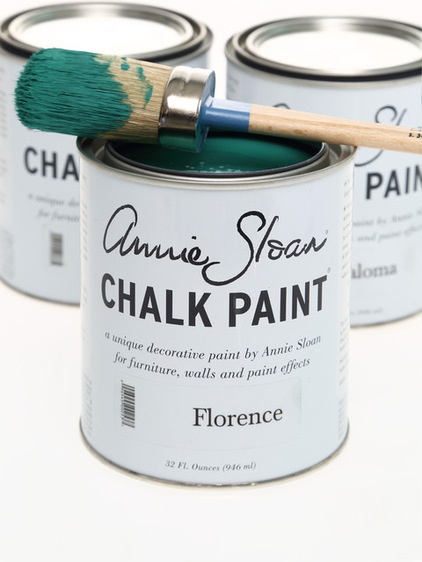
Chalk Paint
Chalk paint is a more recent creation, developed in the early 1990s by Annie Sloan as a decorative furniture finish. Sloan named it chalk paint because of its matte finish.
What it’s made of: Calcite (aka calcium carbonate), talc and pigment.
Most popular use:
Furniture
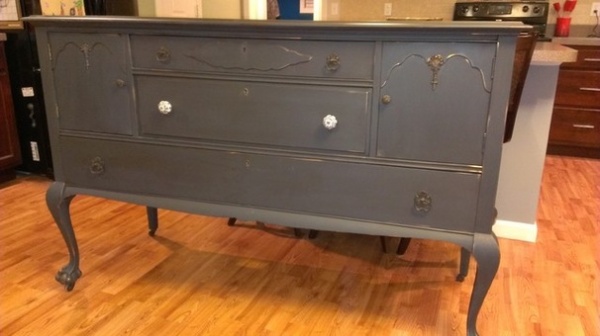
Pros of chalk paint (compared with milk paint):
Comes premixed in cans, so there’s no need to mix it at home.Has greater color and texture consistency and predictability.Less flaking and distressing unless done intentionally.Cons of chalk paint (compared with milk paint):
More expensive: about $36 for a quart. Depending on where you purchase it from, shipping may be extra.
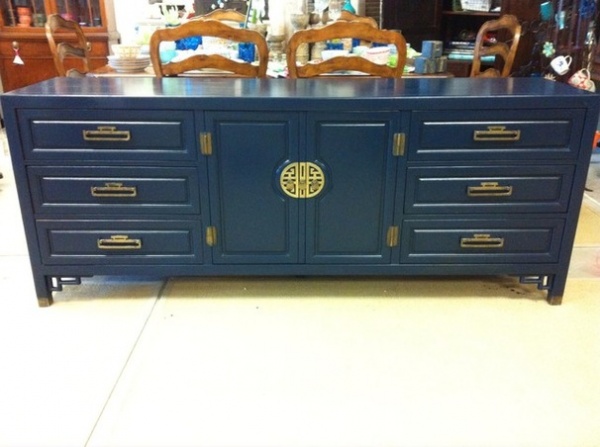
Kelly Millspaugh Thompson of Stylish Patina Interiors in Falls Church, Virginia, considers chalk paint her go-to paint for most projects. She likes that you don’t need to mix the paint and can just “pop open the top of the can and start painting,” she says.
Although Thompson likes the chippy look of milk paint for some projects, she tends to prefers the more consistent look of chalk paint, as seen on this sleek dresser painted in Annie Sloan’s Aubusson Blue. She notes that she has also used chalk paint on brass lamps and even fabric and sees it as an easy way to update and refresh dated items.
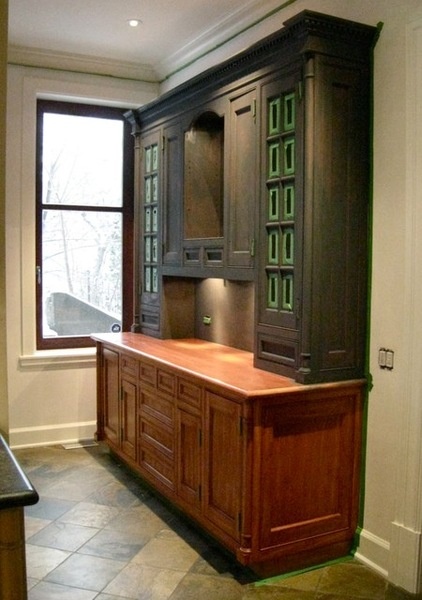
Surface preparation. There’s no preparation needed for milk or chalk paint, as long as the surface isn’t slick and shiny. Otherwise, you’ll want to sand it lightly. Also, make sure the surface is clean. (Some say cleanliness doesn’t matter, but I can’t get past painting something that’s grimy.)
Bonding agent or not? No, not James Bond. A bonding agent added to the first coat of milk or chalk paint will make it adhere to a surface that’s slick or previously painted or varnished. Add a bonding agent only if you want a uniform painted appearance without flakes and chips. Milk paint and chalk paint dealers both sell bonding agents.
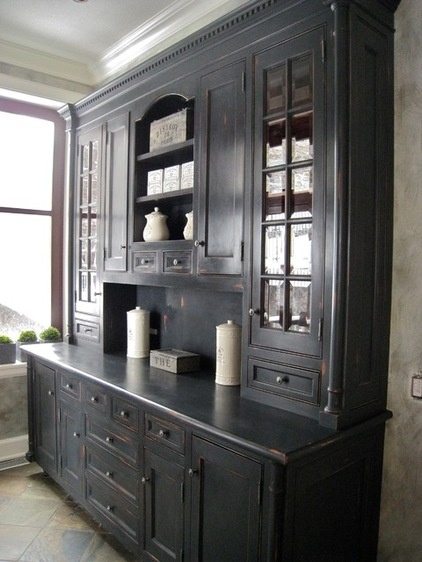
Sealing Milk and Chalk Paint
Wax. Adding a layer of wax over milk or chalk paint adds depth and luster and offers light protection to make a piece suitable for everyday use. The piece here is painted in Annie Sloan’s graphite color and sealed in wax. Surfaces will need to be periodically rewaxed.
Paint manufacturers make both clear and antiquing wax, which has a sepia tone added. Antiquing wax is ideal for settling into the nooks and crannies of carved ornamentation but can also look stunning rubbed over the entire piece. However, note that antiquing wax will change the color, so do a test first. It may be too dramatic and can look dirty.
Hemp or tung oil. Hemp oil and tung oil soak into the surface to provide water resistance and also protect against daily wear and tear. Surfaces will periodically need to be reoiled.
Acrylic varnish. Acrylic varnish offers more even durability for often-used pieces, like coffee tables. Acrylic varnish won’t yellow like other varnishes and lacquers.
Thompson notes that because milk paint is porous, she seals cabinet surfaces painted with milk paint with a professional sealer for durability.
More:
How to Pick the Right Kind of Paint
Refresh Your Furniture With Some Punchy Paint
Related Articles Recommended












